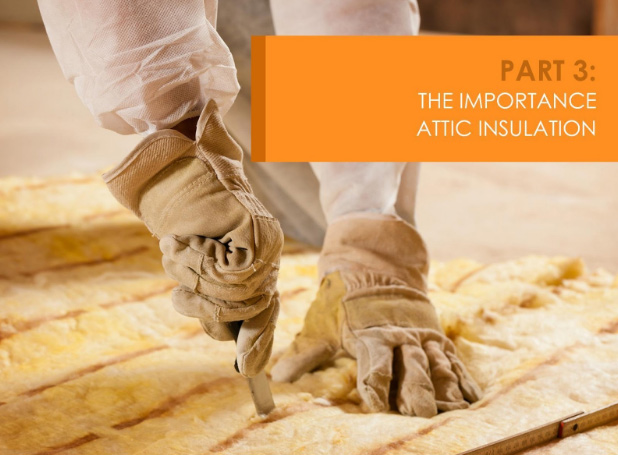Having insulation is standard practice, and for good reason; in most homes, it’s the most cost-effective way of ramping up your home’s energy efficiency, with proper insulation cutting down on heating and cooling costs by up to 40%. Insulation also helps reduce condensation indoors and prevent moisture-related problems such as mold growth, while improving the level of comfort in your home.

Roof experts recommend upgrading your attic insulation when giving your roof a rehab. Most of the heat loss in your home occurs in the attic, which may seem like a good thing at first until you realize that it also causes cooled air to escape. Having a properly insulated attic keeps the cool, regulated air inside and reduces the load on your cooling appliances.
Attic Insulation Options
Choosing the right kind of attic insulation greatly depends on your local climate. For instance, homes in areas with warm climates should have R-38 insulation, while those in areas with cold climates should have the thicker R-49 insulation.
Attic insulation is usually made of blown-in loose cellulose, which is basically recycled newspaper treated with boric acid, borax nitrate, or ammonium sulfate for fire and pest resistance. There’s also blown-in fiberglass, which offers better fire resistance at the cost of a little less thermal resistance. Alternatively, you can use fiberglass batts which are cheaper and easier to install since it doesn’t require the use of a blower.
Regardless of the type of insulation and material used, it’s always best to hire professionals than to take the DIY approach. Attic insulation must be densely packed, and experienced professionals can guarantee that, ensuring that there won’t be any gaps that could compromise your attic insulation’s performance.
Undertaking roofing rehab will let you breathe life back into one of the most important parts of your home. Should you wish to learn more about roofing projects, don’t hesitate to schedule a consultation with your local roofing expert.






